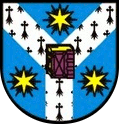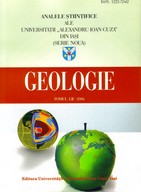
English title
- SERIA
GEOLOGIE (AUI-G) - |

|
| Log in New account |
| Home | Main Page | Guide for Authors | Peer Review | New Articles | Events | Archive | Index | Contact us |

|
Article THE RAMAN STUDY OF WHITE, RED AND BLACK PIGMENTS USED IN CUCUTENI NEOLITHIC PAINTED CERAMICS
NICOLAE BUZGAR - „Al. I. Cuza” University of Iaşi, Department of Geology, 20A Carol I Blv., 700505 Iaşi, Romania GEORGE BODI - Romanian Academy – Iași Branch, Institute of Archaeology, 18 Lascăr Catargi str., 700107 Iași, Romania DAN AŞTEFANEI - „Al. I. Cuza” University of Iaşi, Department of Geology, 20A Carol I Blv., 700505 Iaşi, Romania ANDREI BUZATU - „Al. I. Cuza” University of Iaşi, Department of Geology, 20A Carol I Blv., 700505 Iaşi, Romania View abstract as pdf file | View full article as pdf file Abstract: The white, red and black pigments from 50 ceramic sherds of the phase A of the Cucuteni culture were analyzed using Raman spectroscopy. For the white pigment, the Raman spectra indicated the presence of TiO2 and quartz. CaCO3 was not revealed in any of the samples. For the white pigment, a kaolinite white clay, rich in TiO2 and quartz, formed from the weathering of acid igneous rocks, was used. For the red pigment, a clay rich in Fe oxyhydroxides, subjected to an artificial process of Fe oxyhydroxide enrichment, was used. The Raman spectra indicated the presence of hematite and quartz. As far as the black pigment is concerned, jacobsite and, in only one sample, black carbon or graphite were identified. The source of the manganese black pigment can be explained by secondary accumulations of Mn from the Iacobeni-Ciocăneşti region (Romania) and/or the manganese ore from Nikopol (Ukraine). The red ceramic paste also contains hematite and quartz, just like the red pigment. The raw black ceramic paste contains black carbon, which indicates that it was fired at temperatures lower than 700-750°C. Keywords: Cucuteni – Trypolye, ceramics, pigments, jacobsite, black carbon, rutile, anatase, Raman spectra |
copyright © 2024 Department of Geology |